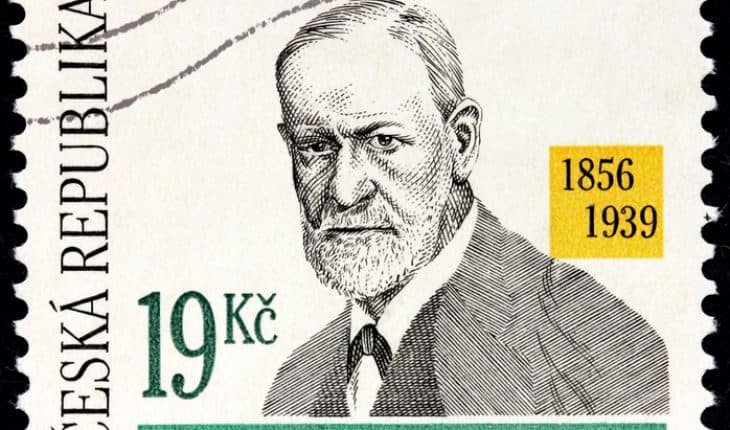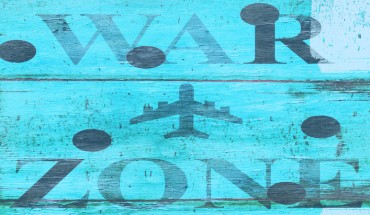Against the backdrop human tragedies that unfold on a daily basis in the waters of the Mediterranean, ‘Leaving Today’ is a major, new exhibition marking the 80th anniversary of the Freud family’s flight to London from Nazi-occupied Vienna and looking at the psychological impact of contemporary experience of flight and exile. On display at the Freud Museum in London, are the family’s original documents, letters and objects, many of which have never been on public display before, including the original documents required to leave Austria and enter Britain. You can also see Sigmund Freud’s personal correspondence with celebrated figures such as Albert Einstein and HG Wells, and personal belongings and even the traditional Austrian, Loden coat worn by the great psychoanalyst when he fled Austria and settled in London.
Hitler’s annexation of Austria to Germany on 13 March had placed Austrian Jews in immediate danger. Within days, Freud’s apartment and publishing house had been raided. A week later, Anna was arrested and questioned by the Gestapo.
Hitler’s annexation of Austria to Germany on 13 March had placed Austrian Jews in immediate danger. Within days, Freud’s apartment and publishing house had been raided. A week later, Anna was arrested and questioned by the Gestapo.
Now, after weeks of uncertainty, Freud, Martha and Anna boarded a train to take them across Europe to Paris, and from there to London and a new life. Other family members had escaped just weeks earlier, but many friends and relatives remained behind to uncertain fates.
The danger of staying in Austria had become clear when the Gestapo interrogated Sigmund Freud’s psychoanalyst daughter Anna Freud following the burning of Freud’s books and forced her to agree that psychoanalysis was part of a Jewish conspiracy. Sigmund’s passage to safety had been aided by his influential friends, who ensured that his collection of antiquities also travelled to England. Anna Freud also escaped, but Sigmund’s sisters were not so fortunate: four of them were to die in Nazi concentration camps. The exhibition displays photographs of these tragic women.
On Saturday 4 June 1938, Sigmund, his wife, Martha, and their daughter Anna left Vienna forever. On the same day, Freud sent a note to his friend, the writer, Arnold Zweig. In it he wrote, briefly, “Leaving today for 39 Elsworthy Road, London NW3 …”.
Freud’s note was simple, but behind it lay a complex and dangerous series of events and an urgent need to escape..
Through the experiences of Freud and his family threads a universal story of flight and exile. Britain remains a refuge for many fleeing persecution, torture, enslavement and murder. At the centre of the exhibition will be work created by young people who attend the Baobab Centre for Young Survivors in Exile. Each young person has come to Britain, unaccompanied, to seek refuge and safety.
Through the experiences of Freud and his family threads a universal story of flight and exile. Britain remains a refuge for many fleeing persecution, torture, enslavement and murder. At the centre of the exhibition will be work created by young people who attend the Baobab Centre for Young Survivors in Exile. Each young person has come to Britain, unaccompanied, to seek refuge and safety.
Amongst the highlight of the exhibition is an important new addition to the museum’s collection, ‘The Psychoanalyst’ (1962), a striking portrait by Marie-Louise Motesiczky (1906-1996), now being shown for the first time. Marie-Louise von Motesiczky herself had an interesting link to Sigmund Freud, psychoanalysis and the Freud family as she and her family had moved in similar circles to the Freuds, in Vienna. Marie-Louise’s grandmother Anna von Lieben was a patient of Sigmund Freud’s, as were other relatives, while her brother Karl pursued his own studies in psychoanalysis with Wilhelm Reich. Like the Freuds, Marie-Louise and her mother fled Austria immediately after the Anschluss in 1938 and arrived in England in 1940 where they spent the rest of their lives. In the mid 1930s, Marie-Louise was suffering from a creative block partly caused by the tense environment, difficulties in her love life and from the lack of a father figure to support her attempts to establish herself as an artist. She resorted to psychoanalysis to help with her creative block, which was partly triggered by her flight and exile. She had just been finding the confidence to exhibit in Vienna when the Nazis marched in. She continued to struggle for recognition after the war ended as German art was little regarded in post-war England and she struggled for recognition.
Sigmund Freud chose London as his refuge in 1938 stating that: “I came to England where I hope to end my life in freedom”. Along with other possessions, Freud managed to rescue 60 of his antiquities just weeks before the outbreak of World War Two, many of which are included in the exhibition. He died of cancer following 30 operations on his jaw on 23 September 1939.
Leaving Today: the Freuds in Exile 1938
18 July – 30 September 2018
Freud Museum London
20 Maresfield Gardens, London NW3 5SX
www.freud.org.uk
Opening hours: Wednesday to Sunday, 12-5pm
- People’s Choice Victory for Down’s Syndrome Scotland Garden at Chelsea 2025 - 28th May 2025
- Cadogan: A Chelsea Family By Tamsin Perrett - 3rd May 2025
- Dream Worlds a new exhibition in Cambridge - 14th December 2024







